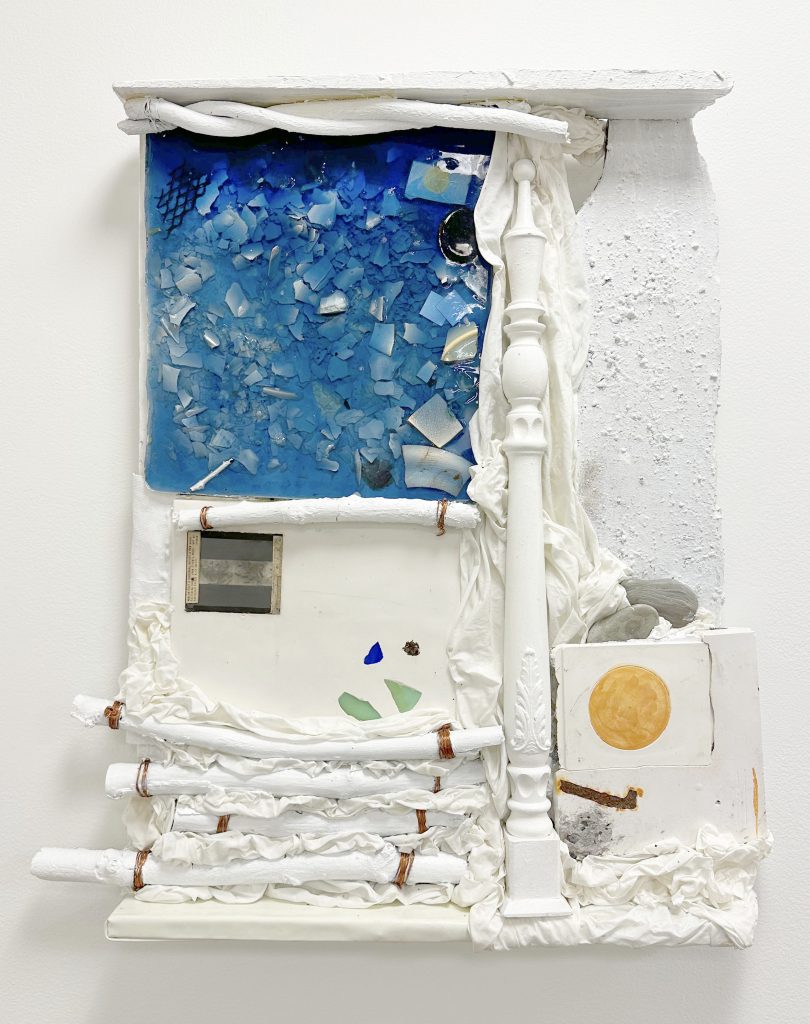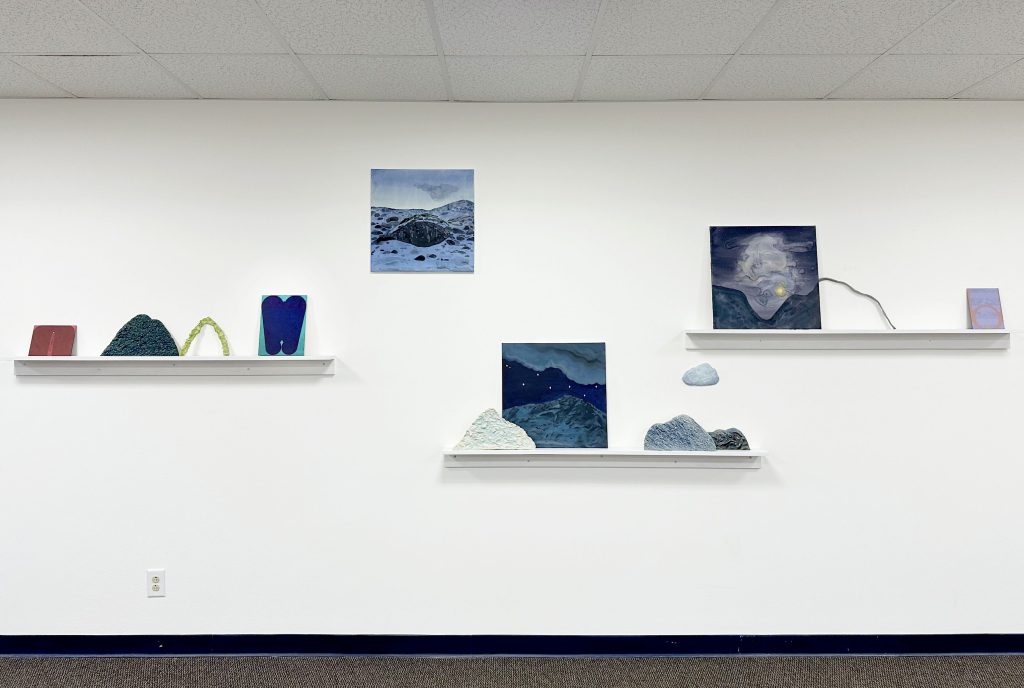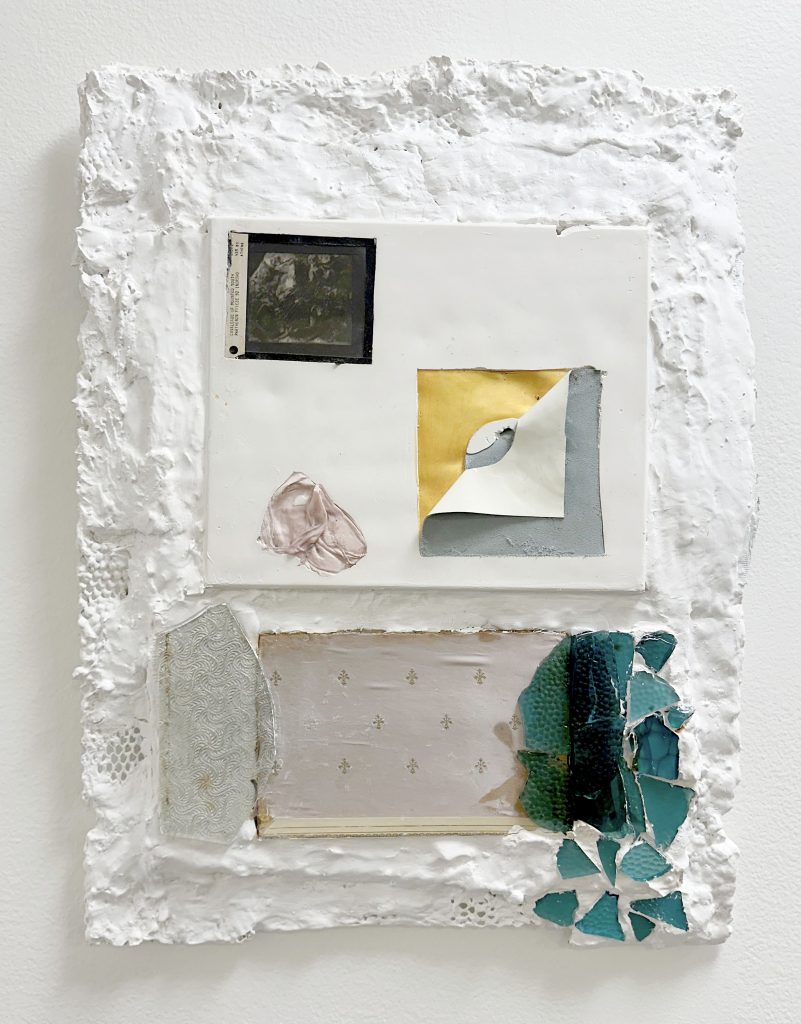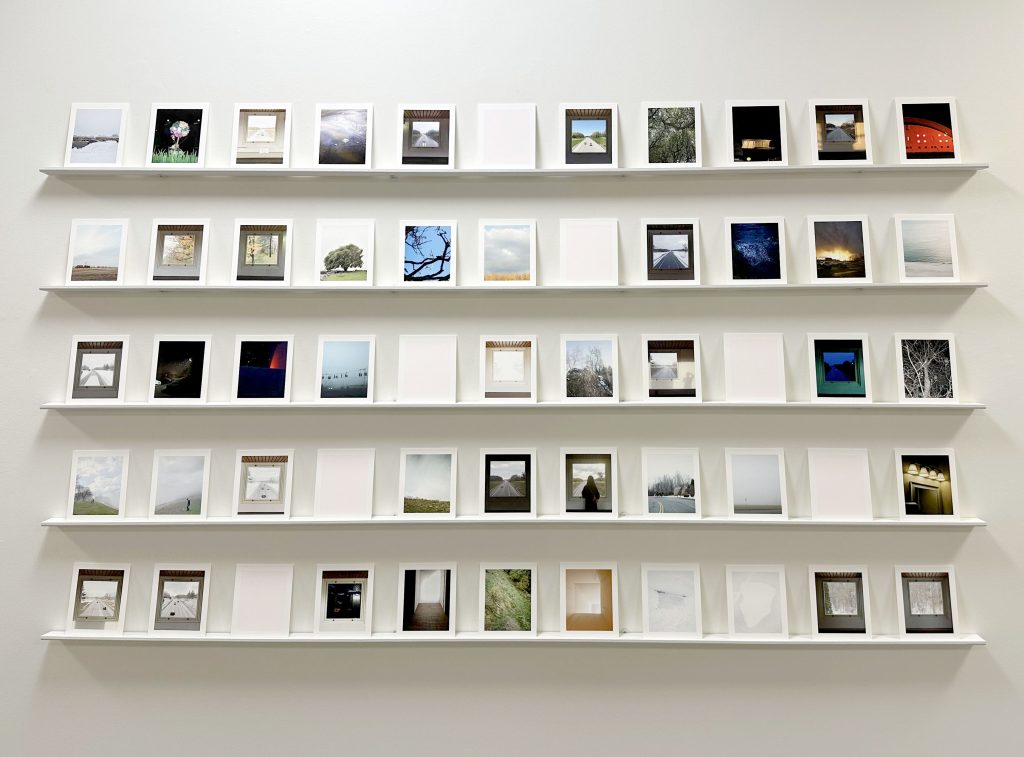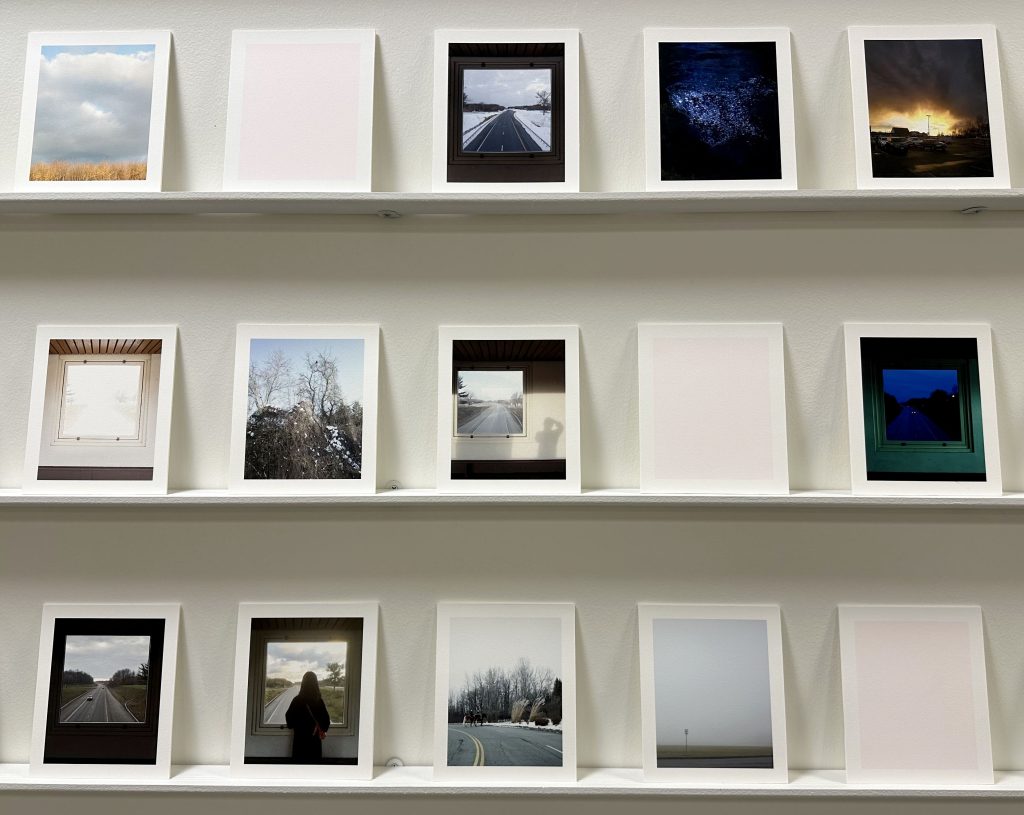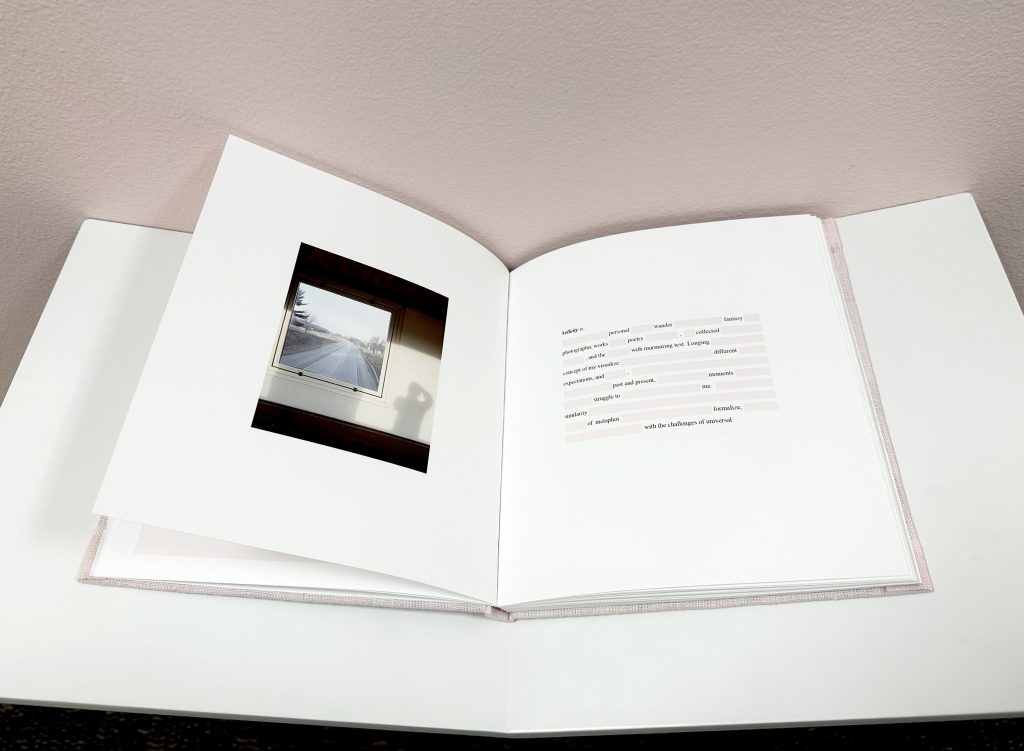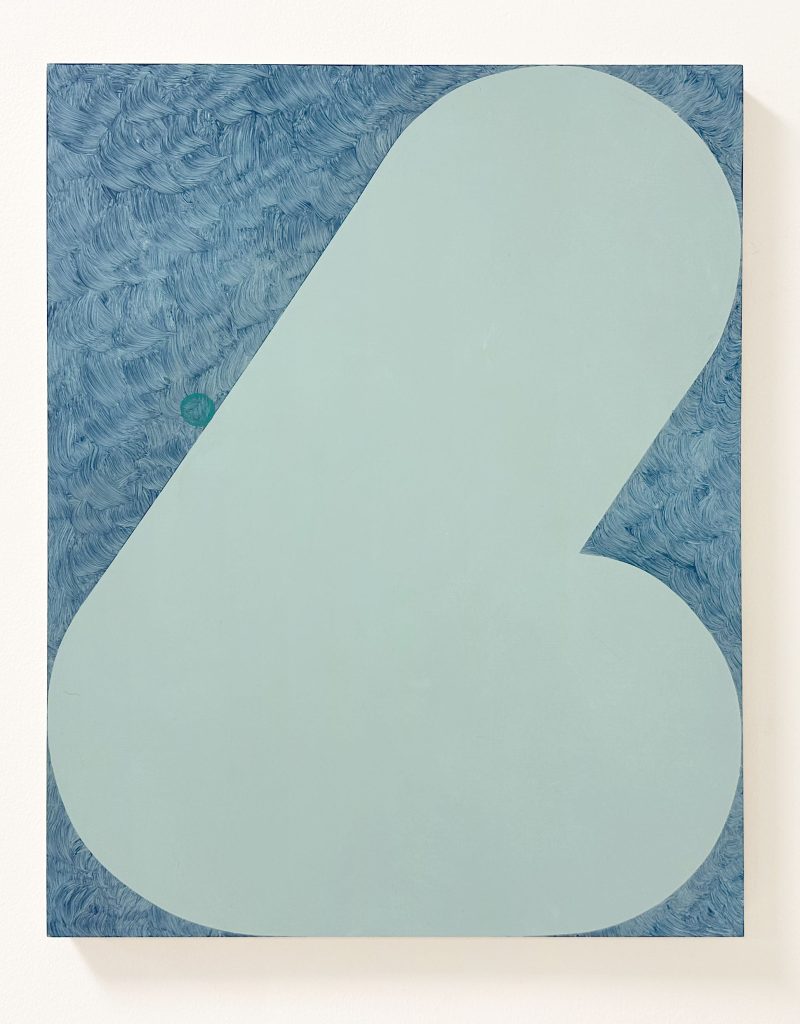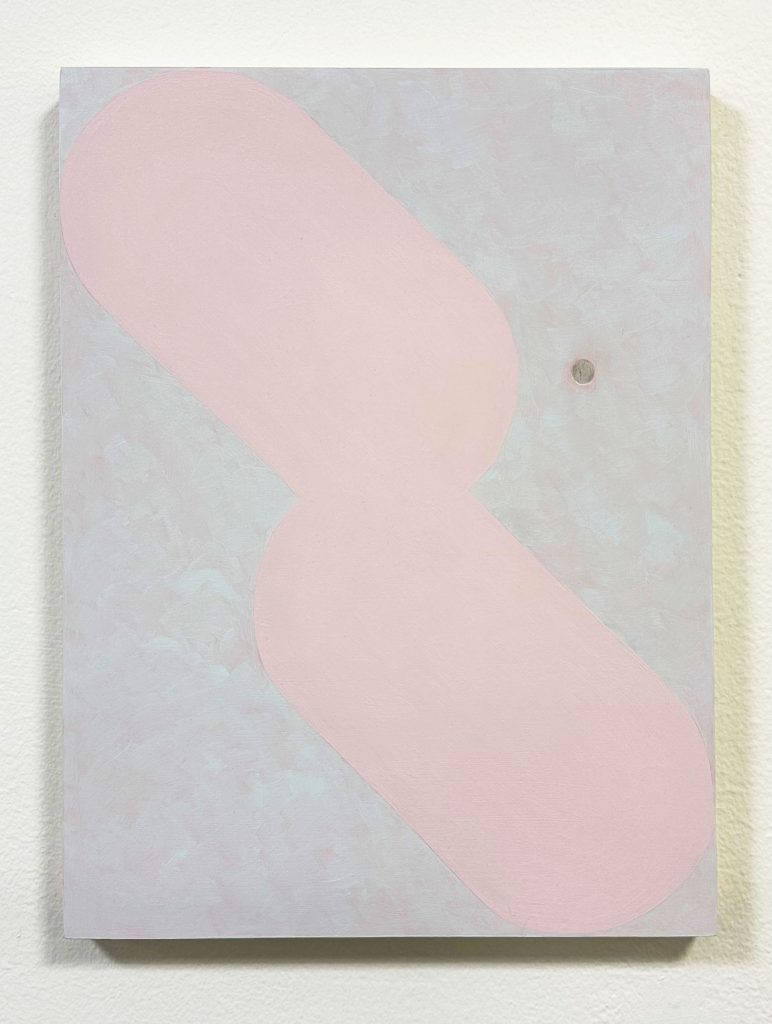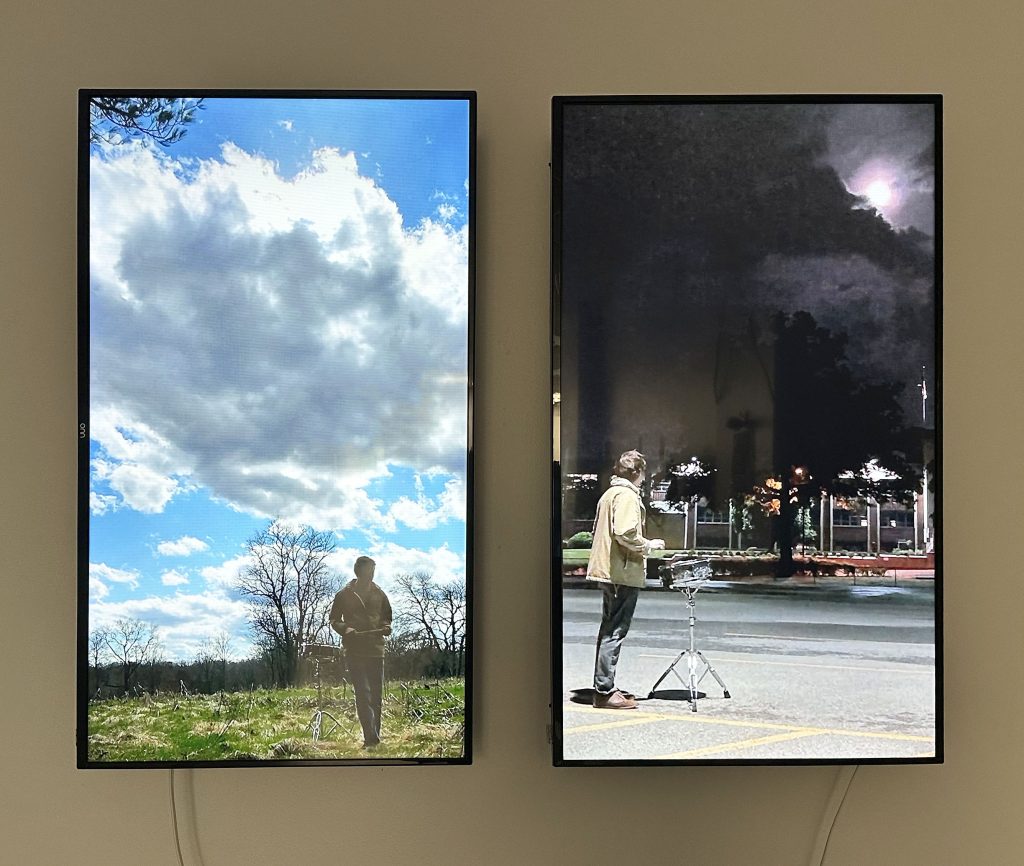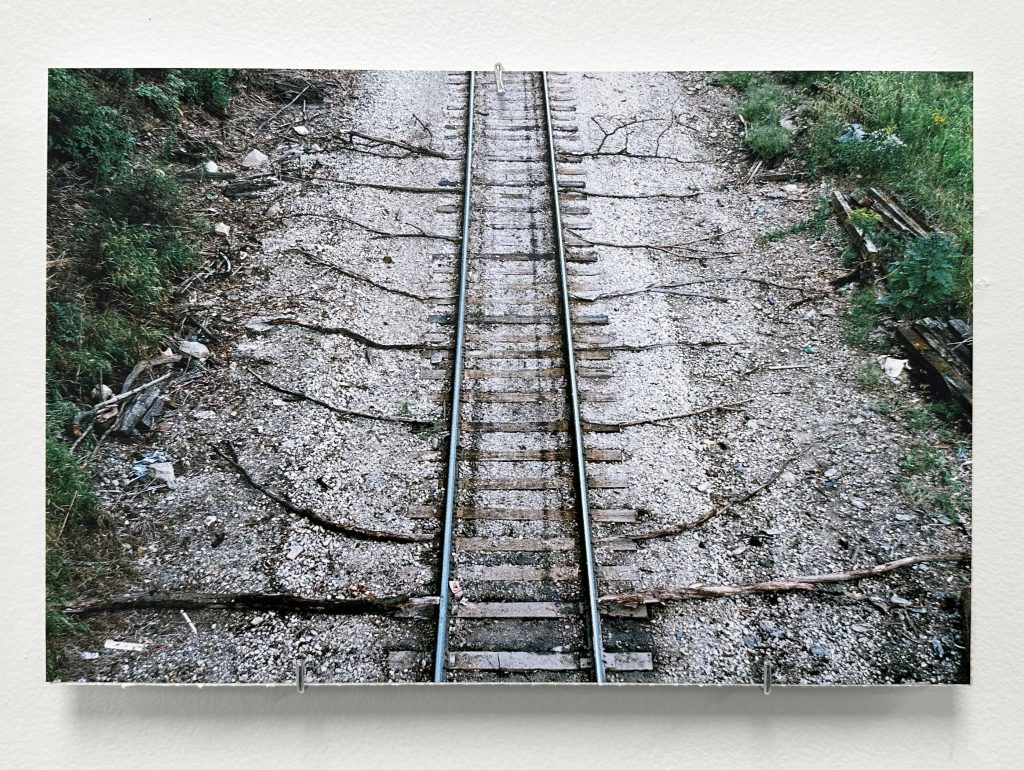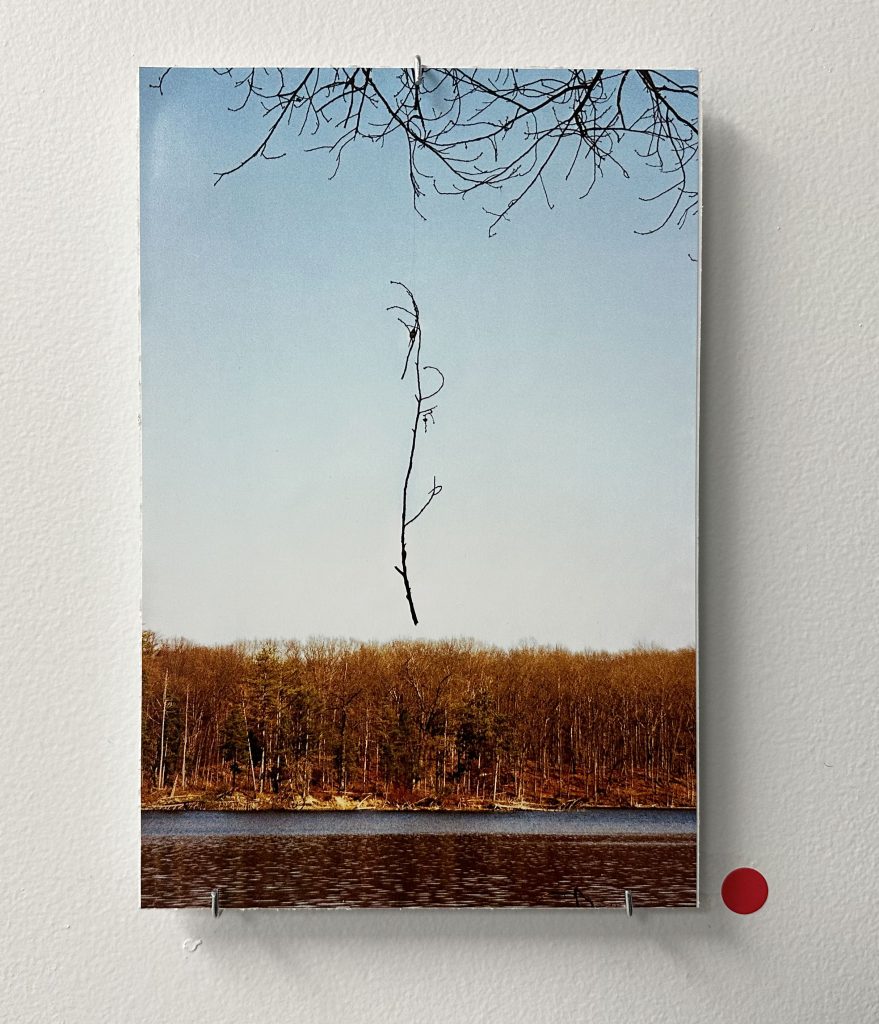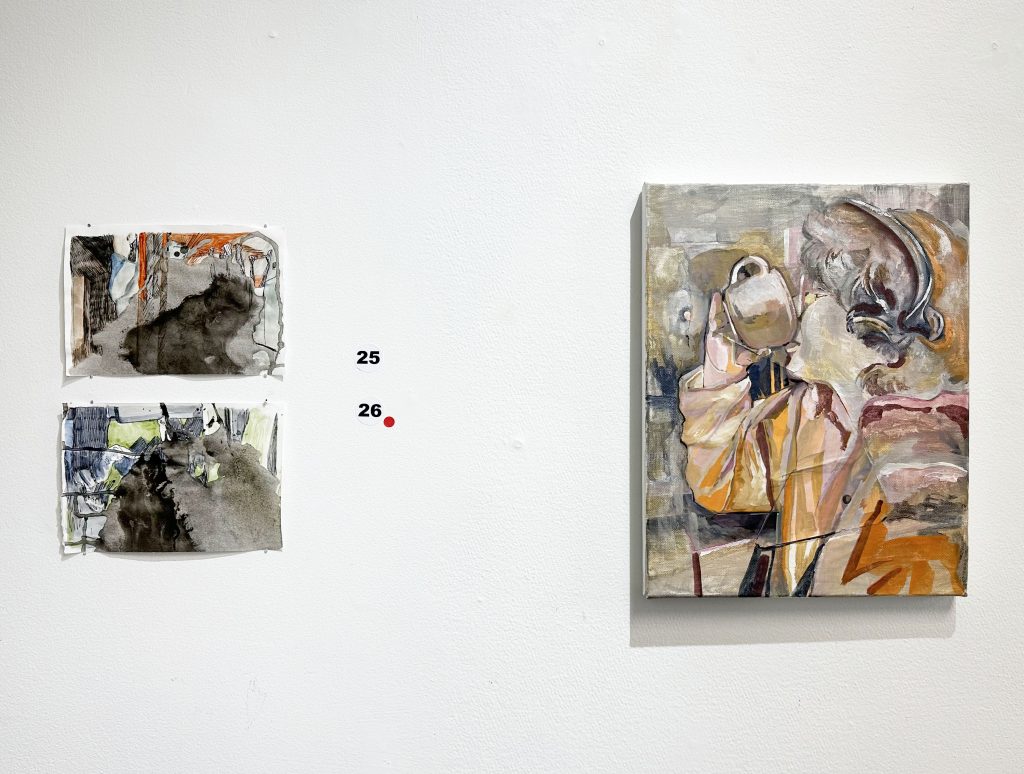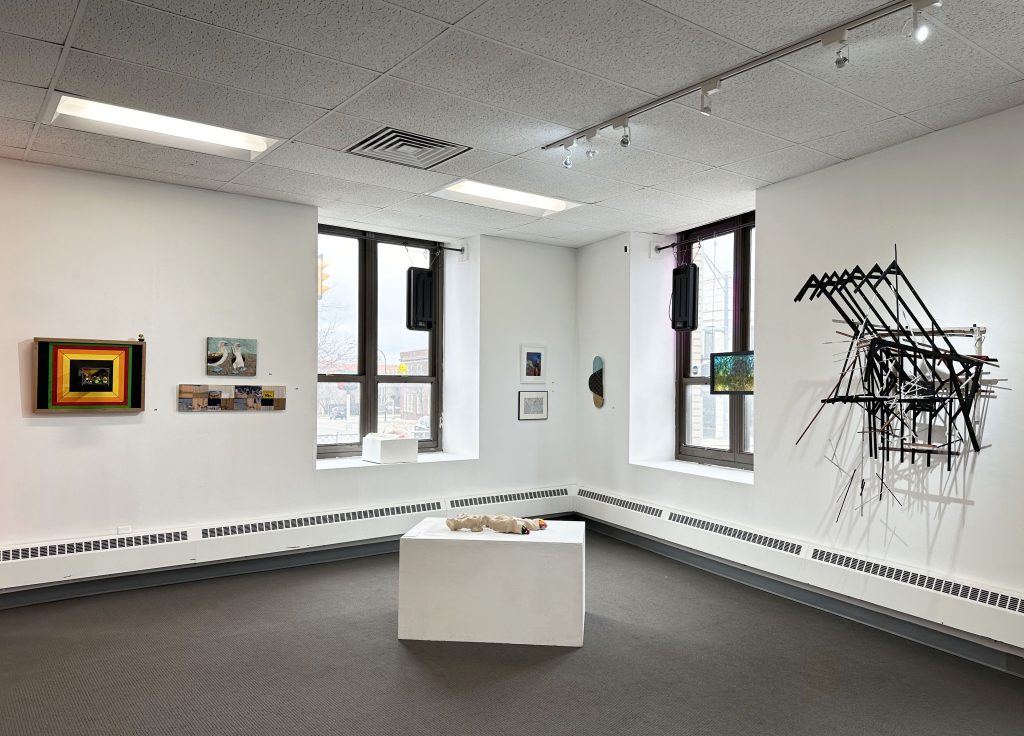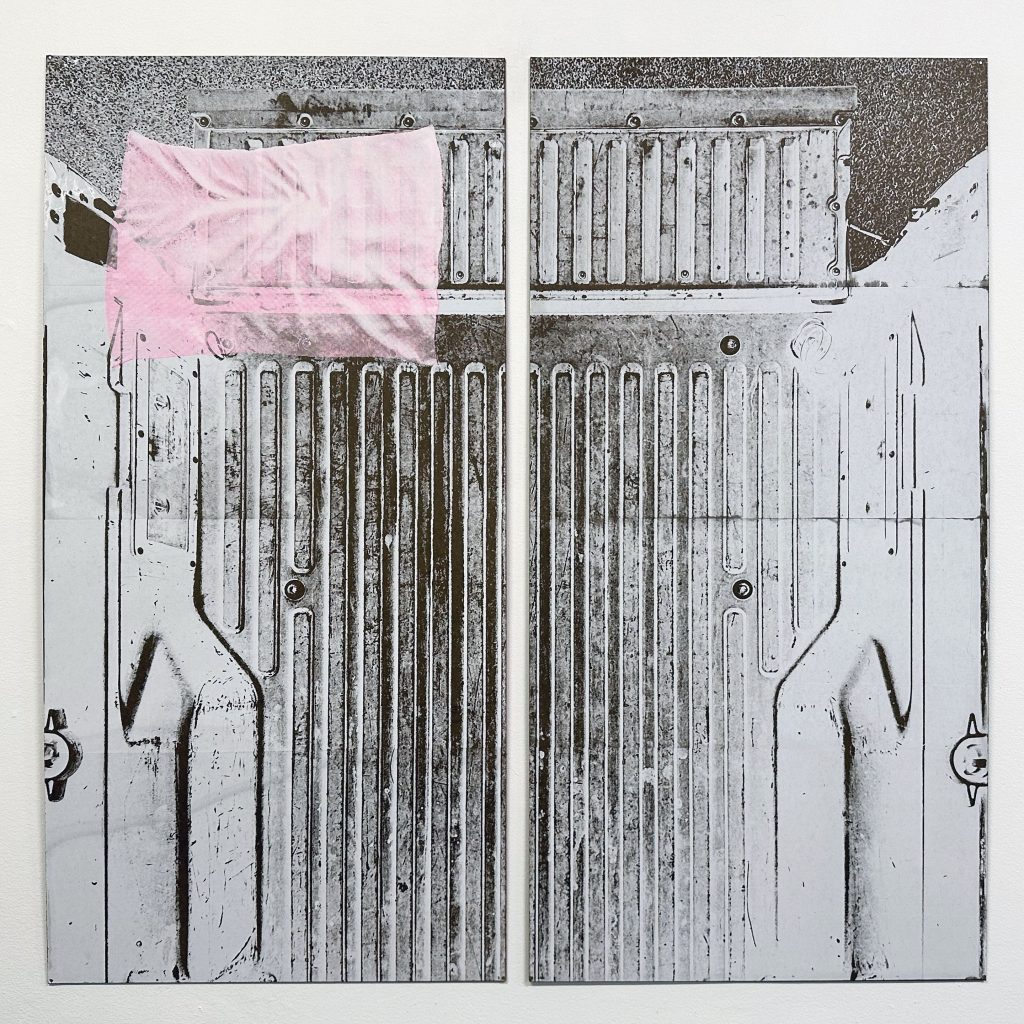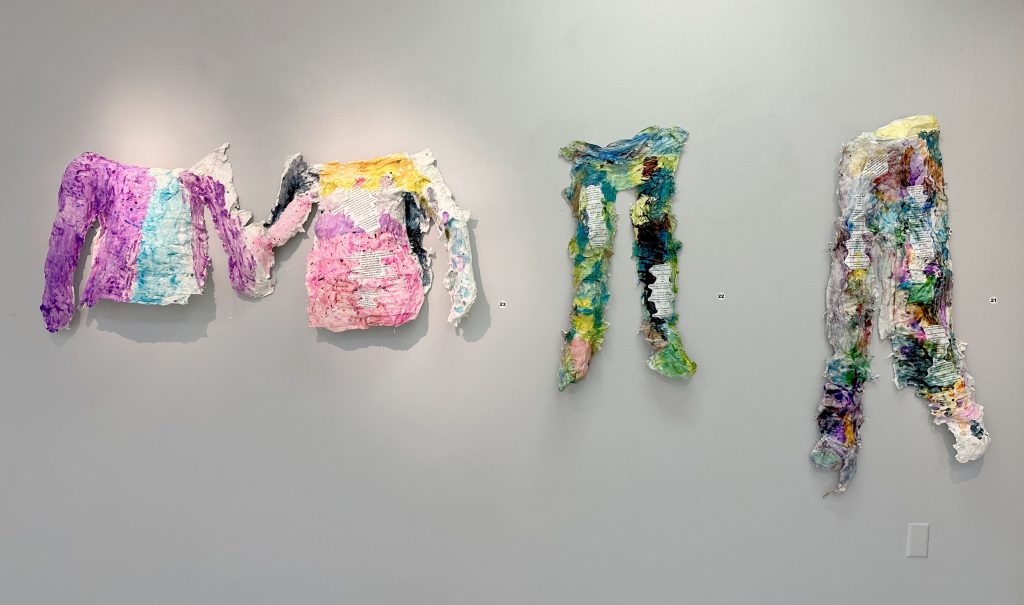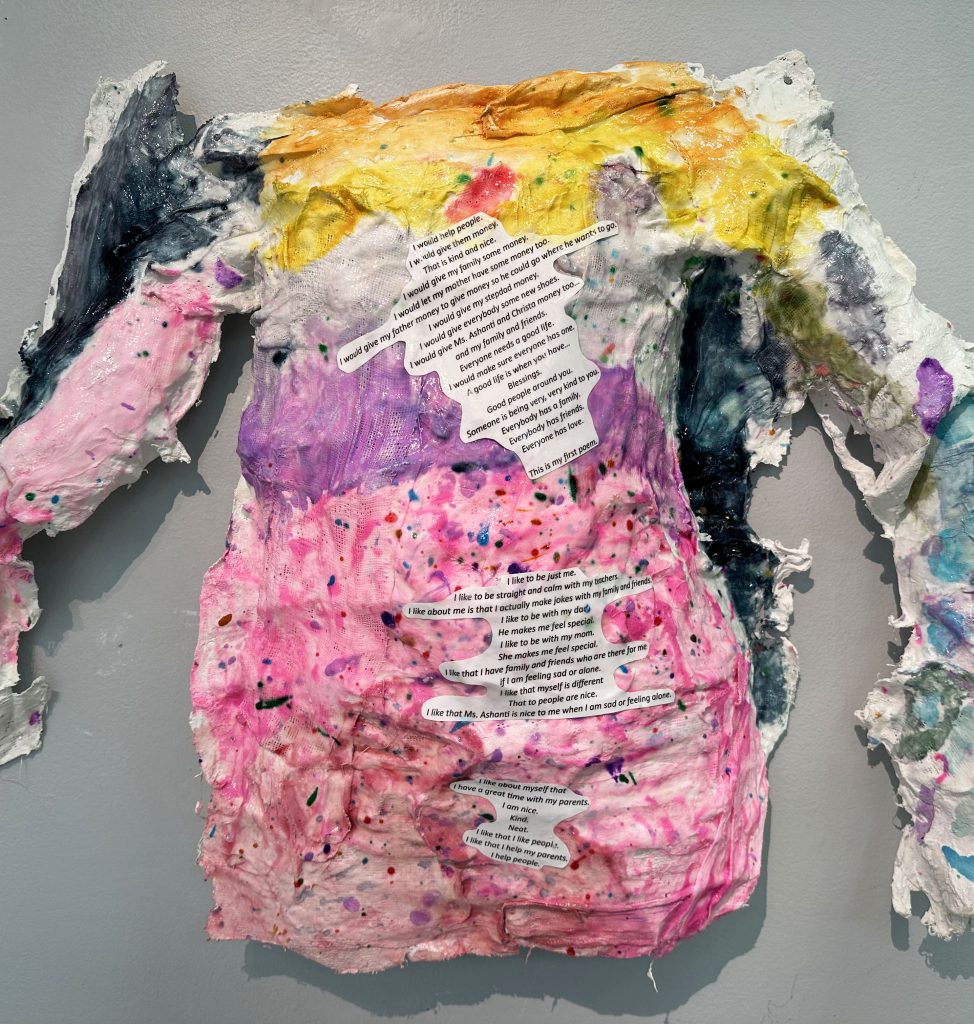
Alyssa Lizzini, “Industrial Valley”, Ink and acrylic on paper on panel

Alyssa Lizzini, “East 41st”, Ink, acrylic, and found object on paper and panel


Alyssa Lizzini, “Unraveling City”, Ink and acrylic on paper mounted on 2 panels
Akron Soul Train is currently showing two exhibitions by Ohio artists. Alyssa Lizzini’s The Universe Between Here and There, pictured above, expands upon scenes from daily life using a mixed media approach. The works take the viewer into her expanded sections of the city, and encourages them to think about what may be unobserved in their own daily life.
From the gallery-
In The Universe Between Here and There, Alyssa Lizzini explores the interwoven connection between space, time, and memory through large-scale, multi-layer drawings. Lines, grids, maps, and data become the stars, black holes, and supernovae of an ever-expanding universe of memory. Using ink, acrylic paint, and collaged paper, Lizzini creates overlapping images that seem to compress space and time yet simultaneously fly apart or implode. Her drawings suggest that memory unravels in much the same way and investigates the almost inseparable connection between person and place.
“Drawings explore both my own personal histories related to remembered places and broader histories recorded through archival, ethnographic, and visual research of city spaces…The scale of [my] drawings allow the viewer to feel immersed in each piece, surrounded by swirling and morphing cityscapes, memory objects, and natural elements. They ask the viewer to consider the many layers of context not immediately visible in our urban world, and give a new language for understanding the ever-changing nature of memory.” – Alyssa Lizzini
Akron Soul Train Artist-in-Residence Melih Meric’s uses traditional Middle Eastern patterns to explore identity.
From the gallery-
Meric uses a traditional approach to their imagery through sacred geometry and explorations of Islamic geometric abstraction. Challenging traditional presentations of print editions, Meric’s print work crosses the borders of the paper. It highlights an expansion of patterns like Middle Eastern tiles. It also speaks to queerness without being explicitly queer. Stitched Editions: Exploring the New poses integral questions surrounding erasure and identity in Middle Eastern communities. Meric’s craft lies in creating wall-hanging objects that play between the realms of dimensionality while still being unmistakably paper. Their work acknowledges and is proud of its dimension, speaking certain truths to multiple minority groups.
“My work deals with making peace with a part of my culture that drove me to leave it. Finding beauty in design and simplicity, then creating systems to complicate those principles. I fell in love with printmaking and the idea of multiplicity when I first made the connection to tiles from the Middle East. It suddenly became a tool to create and expand patterns that challenge traditions in crafts.” – Melih Meric

Melih Meric, “I Think I Remember Something, Nevermind”, “Stitched Edition” of 12 linoleum prints

Melih Meric, “Carnation”, “Stitched Edition” of 36 woodblock prints

Melih Meric, “Carnation”, “Stitched Edition” of 36 woodblock prints (detail)

Melih Meric, “Swept Under”, “Stitched Edition” of 8 silkscreen prints
Both of these exhibitions close 5/11/24.



























